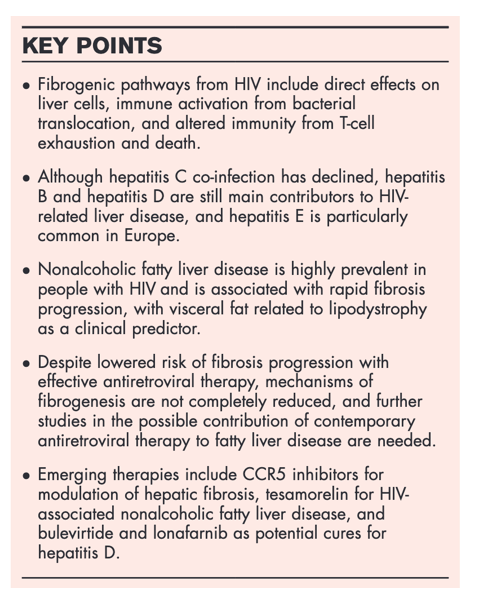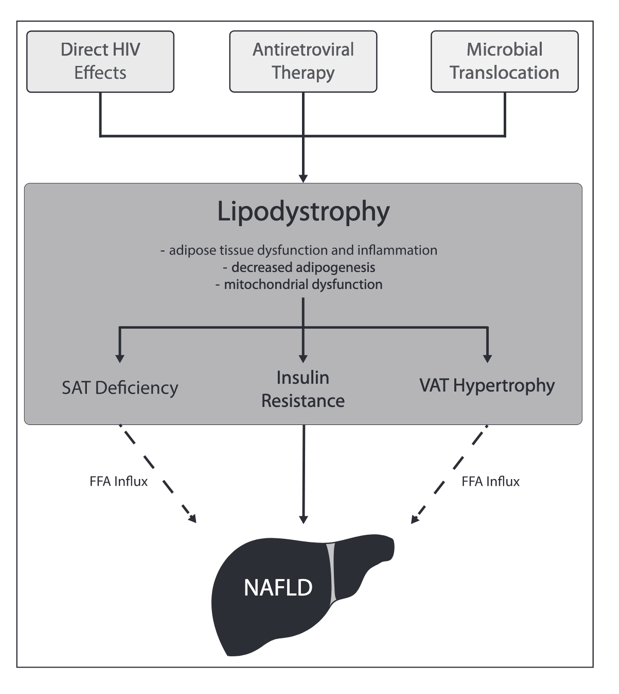| |
Causes and outcomes of hepatic fibrosis in persons living with HIV
|
| |
| |
Download the PDF here
Nov 2022 Current opinion in HIV and AIDS Debra W. Yen and Kenneth E. Sherman
CONCLUSION
Liver disease continues to be a major source of morbidity and mortality among PLWH. Key contributors to injury and development of fibrosis have evolved over the last two decades. While some disease processes like HCV are receding in significance due to the presence of effective curative treatments, other diseases have emerged in importance. Hepatic fibrosis is the endpoint in injury from a host of interrelated etiologies, leading to development of cirrhosis and subsequently end-stage liver disease. Future clinical and research needs include improved recognition of chronic viral infections, cure strategies for hepatitis B and D, better understanding of processes that cause simple steatosis to develop into inflammatory NAFLD/NASH in people with HIV, and HIV treatment regimens that protect the liver rather than cause harm. Promising antifibrotic agents are on the horizon, but focus on PLWH has been relatively limited. Pending HIV cure strategies, investment in the reduction of liver disease and prevention of fibrosis development remain key targets for the health and safety of persons living with HIV.
The potential for hepatitis D cure has generated excitement in the field, especially considering the rapid progression of liver disease from HDV and prior lack of effective therapy.
Tesamorelin, a growth hormone releasing analog administered subcutaneously once daily and approved by the United States Food and Drug Administration (FDA) for HIV lipodystrophy, is an emerging therapy for HIV-associated NAFLD.
in a phase 2 trial, patients with HIV treated with cenicriviroc (CVC), a CCR5 and CCR2 dual antagonist, showed a significant improvement in hepatic fibrosis biomarkers compared to use of an efavirenz-based regimen [92,93].

FIGURE 2. Direct HIV effects, antiretroviral therapy, and microbial translocation all contribute to the pathogenesis of HIV lipodystrophy through adipose tissue dysfunction and inflammation, decrease in adipogenesis, and mitochondrial dysfunction. These manifest as SAT deficiency and VAT hypertrophy, which lead to lipid overflow and hepatic influx of FFAs, as well as insulin resistance. These factors play important roles in the development of HIV-associated NAFLD. SAT, subcutaneous adipose tissue; VAT, visercal adipose tissue; FFA, free fatty acid; NAFLD, nonalcoholic fatty liver disease.

------------------------------
|
|
| |
| |
|
|
|